After transiting the Dardanelles and the Sea of Marmara overnight, we sailed into Istanbul at the very reasonable hour of 9am. Many people we've spoken to have said that Istanbul is one of the prettiest ports to sail into as you get to see some of the more interesting landmarks.
The city straddles the Bosphorus Straits and is the only city in the world that sits in two continents
. Three great empires (Roman, Byzantine and Ottoman) have controlled it, with each leaving a piece of their culture behind. The Greeks recognised the value of the area and Greek Coloniser Byzas founded Byzantium in 685 BC. A thousand years later, the Roman Emperor Constantine chose the area as the new capital of the empire. Then during the Crusades, the Sultan Mehmet attacked the city and in 1453 the city became part of the Ottoman Empire.
The ship was docked in the Karakoy part of town close to the vicinity of the Galata Tower. As this was only about a 20 minute walk from the old town, we decided to walk in from the ship. On the walk we crossed over the Galata Bridge and the section of water that leads to the Golden Horn.
The Blue Mosque (Sultan Ahmet Mosque) is one of the city’s enduring landmarks. Built between 1609 and 1617, it takes its name from the thousands of blue and green Iznik tiles that line the interior walls. As the mosque is used for worship, they close it off to non Muslim visitors prior to each prayer session. We arrived at the mosque just after they closed it to visitors in preparation for midday prayers. This meant we were right next to it when the call to prayer was broadcast. It was interesting as the initial call would come from the Blue Mosque, with the various other Mosques across the city repeating it, so there was this kind of echo effect.
Since we had to wait awhile to be able to get back in, we decided to have some lunch
. After having lunch, we headed back down to the mosque and proceeded around to the visitors entry. After donning our head scarves and mosque supplied skirts, we headed in and had a look around.
The inside is split into various areas – men’s pray area, women’s pray area and the area reserved for the non Muslim visitors. Above everyone’s head are thousands of small tiles, each placed to create various patterns and mosaics.
At the other end of the hippodrome is the Hagia Sofia (Ayasofa Muzesi). Its interior is lined with marble and pillars from Ephesus. As there was long line to get to the ticket office, we weren’t able to get in to see it other than from the outside.
Next stop was the largest covered market in the world, the Grand Bazaar. It is a collection of 4000 shops, café’s and restaurants spread across 65 winding streets. The Bazaar was crowded and we changed between being invisible to the shop owner to being hassled to purchase something. Our attempts at haggling were ok, a carpet salesman didn’t like our suggestion for purchasing a small matt (fail), however we were good at purchasing headphones and a t-shirt (win).
After the Bazaar and another stop at a café for a beverage and some baklava, we made our way back towards the ship. Unfortunately we turned left when we should have turned right, and found ourselves further way from the ship than what we intended. It was a very brisk walk back to the ship, with each of us checking the time on a regular basis.
Almost 30k steps later (according to my pedometer) we were back on the ship and with three minutes to spare before 'all aboard’ time – that said being the last two passengers to get onboard meant we were clapped when we arrived…
Istanbul is such a varied city, that it is impossible to see everything it offers in just one day. I think it will be added to the ‘need to go back to list’.
Fun fact:
The Topkapi Palace (i.e. where the Sultan’s Harem lived) kitchens once employed over 1000 servants who worked around the clock to serve the 5000 residents that lived in the palace.
We’ve come to Constantinople
Tuesday, June 24, 2014
 Istanbul, Turkey
Istanbul, Turkey
Other Entries
-
21La la la
Jun 0717 days prior At Sea, Indiaphoto_camera3videocam 0comment 2
At Sea, Indiaphoto_camera3videocam 0comment 2 -
22Motoring around Mumbai
Jun 0816 days prior Mumbai, Indiaphoto_camera12videocam 0comment 2
Mumbai, Indiaphoto_camera12videocam 0comment 2 -
23“I swear I’m feeling fine”
Jun 0915 days prior At Sea, Internationalphoto_camera0videocam 0comment 1
At Sea, Internationalphoto_camera0videocam 0comment 1 -
24The fallout
Jun 1014 days prior At Sea, Omanphoto_camera3videocam 0comment 0
At Sea, Omanphoto_camera3videocam 0comment 0 -
25Salam Dubai - Part 1
Jun 1113 days prior Dubai, United Arab Emiratesphoto_camera13videocam 0comment 1
Dubai, United Arab Emiratesphoto_camera13videocam 0comment 1 -
26Salam Dubai - Part 2
Jun 1212 days prior Dubai, United Arab Emiratesphoto_camera8videocam 0comment 0
Dubai, United Arab Emiratesphoto_camera8videocam 0comment 0 -
27Success
Jun 1311 days prior At Sea, Omanphoto_camera0videocam 0comment 0
At Sea, Omanphoto_camera0videocam 0comment 0 -
28Rough seas
Jun 1410 days prior At Sea, Omanphoto_camera2videocam 0comment 1
At Sea, Omanphoto_camera2videocam 0comment 1 -
29Pirate lookout
Jun 159 days prior Gulf Of Aden, Somaliaphoto_camera2videocam 0comment 1
Gulf Of Aden, Somaliaphoto_camera2videocam 0comment 1 -
30Ships everywhere
Jun 168 days prior At Sea, Eritreaphoto_camera3videocam 0comment 1
At Sea, Eritreaphoto_camera3videocam 0comment 1 -
31Roaming the Red Sea
Jun 177 days prior At Sea, Saudi Arabiaphoto_camera0videocam 0comment 0
At Sea, Saudi Arabiaphoto_camera0videocam 0comment 0 -
32Gulf of Suez and sporting events
Jun 186 days prior At Sea, Egyptphoto_camera4videocam 0comment 0
At Sea, Egyptphoto_camera4videocam 0comment 0 -
33Northbound convoy
Jun 195 days prior Suez, Egyptphoto_camera12videocam 0comment 0
Suez, Egyptphoto_camera12videocam 0comment 0 -
34Mediterranean melodies
Jun 204 days prior At Sea, Egyptphoto_camera1videocam 0comment 0
At Sea, Egyptphoto_camera1videocam 0comment 0 -
35Welcome to the Cyclades
Jun 213 days prior Mykonos, Greecephoto_camera11videocam 0comment 1
Mykonos, Greecephoto_camera11videocam 0comment 1 -
36Athena vs Poseidon
Jun 222 days prior Athens, Greecephoto_camera17videocam 0comment 1
Athens, Greecephoto_camera17videocam 0comment 1 -
37Everyone’s at Ephesus
Jun 231 day prior Ephesus, Turkeyphoto_camera14videocam 0comment 0
Ephesus, Turkeyphoto_camera14videocam 0comment 0 -
38We’ve come to Constantinople
Jun 24 Istanbul, Turkeyphoto_camera14videocam 0comment 0
Istanbul, Turkeyphoto_camera14videocam 0comment 0 -
39Memorials
Jun 251 day later Anzac Cove, Turkeyphoto_camera12videocam 0comment 3
Anzac Cove, Turkeyphoto_camera12videocam 0comment 3 -
40Steep Santorini
Jun 262 days later Santorini, Greecephoto_camera13videocam 0comment 2
Santorini, Greecephoto_camera13videocam 0comment 2 -
41Rest day
Jun 273 days later At Sea, Greecephoto_camera0videocam 0comment 0
At Sea, Greecephoto_camera0videocam 0comment 0 -
42Boka Kotorska
Jun 284 days later Kotor, Serbia and Montenegrophoto_camera8videocam 0comment 0
Kotor, Serbia and Montenegrophoto_camera8videocam 0comment 0 -
43Veneto
Jun 295 days later Venice, Italyphoto_camera16videocam 0comment 1
Venice, Italyphoto_camera16videocam 0comment 1 -
44Good morning Venice
Jun 306 days later Venice, Italyphoto_camera8videocam 0comment 1
Venice, Italyphoto_camera8videocam 0comment 1 -
45Historical Dubrovnik
Jul 017 days later Dubrovnik, Croatiaphoto_camera10videocam 0comment 0
Dubrovnik, Croatiaphoto_camera10videocam 0comment 0 -
46Volcano!
Jul 028 days later At Sea, Italyphoto_camera5videocam 0comment 0
At Sea, Italyphoto_camera5videocam 0comment 0 -
47Running around Roma
Jul 039 days later Rome, Italyphoto_camera16videocam 0comment 0
Rome, Italyphoto_camera16videocam 0comment 0 -
48Tuscany
Jul 0410 days later Florence, Italyphoto_camera13videocam 0comment 0
Florence, Italyphoto_camera13videocam 0comment 0 -
49Oh la la, French Rivera
Jul 0511 days later Toulon, Francephoto_camera11videocam 0comment 0
Toulon, Francephoto_camera11videocam 0comment 0 -
50Basking in Barcelona
Jul 0612 days later Barcelona, Spain and Canary Islandsphoto_camera15videocam 0comment 0
Barcelona, Spain and Canary Islandsphoto_camera15videocam 0comment 0 -
51Sea day
Jul 0713 days later At Sea, Spain and Canary Islandsphoto_camera2videocam 0comment 1
At Sea, Spain and Canary Islandsphoto_camera2videocam 0comment 1 -
52Gallivanting around Gibraltar
Jul 0814 days later Gibraltar, United Kingdomphoto_camera18videocam 0comment 2
Gibraltar, United Kingdomphoto_camera18videocam 0comment 2 -
53Walking Lisbon
Jul 0915 days later Lisbon, Portugalphoto_camera13videocam 0comment 1
Lisbon, Portugalphoto_camera13videocam 0comment 1 -
54Time for another sea day
Jul 1016 days later At Sea, Spain and Canary Islandsphoto_camera2videocam 0comment 1
At Sea, Spain and Canary Islandsphoto_camera2videocam 0comment 1 -
55Jackpot Bingo
Jul 1117 days later At Sea, Francephoto_camera0videocam 0comment 1
At Sea, Francephoto_camera0videocam 0comment 1 -
56The South
Jul 1218 days later Isle of Wight, United Kingdomphoto_camera13videocam 0comment 1
Isle of Wight, United Kingdomphoto_camera13videocam 0comment 1

 Istanbul, Turkey
Istanbul, Turkey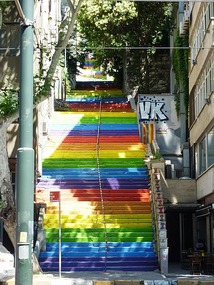
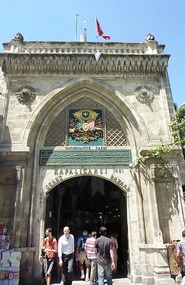

















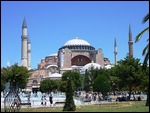
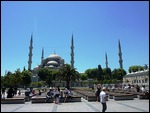
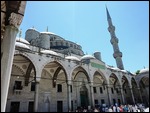
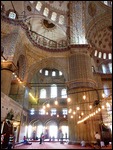
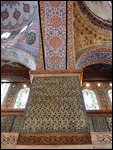


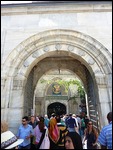
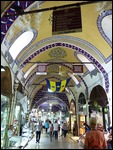
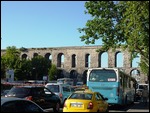
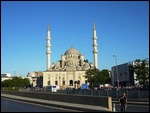
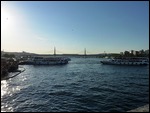
2025-05-22